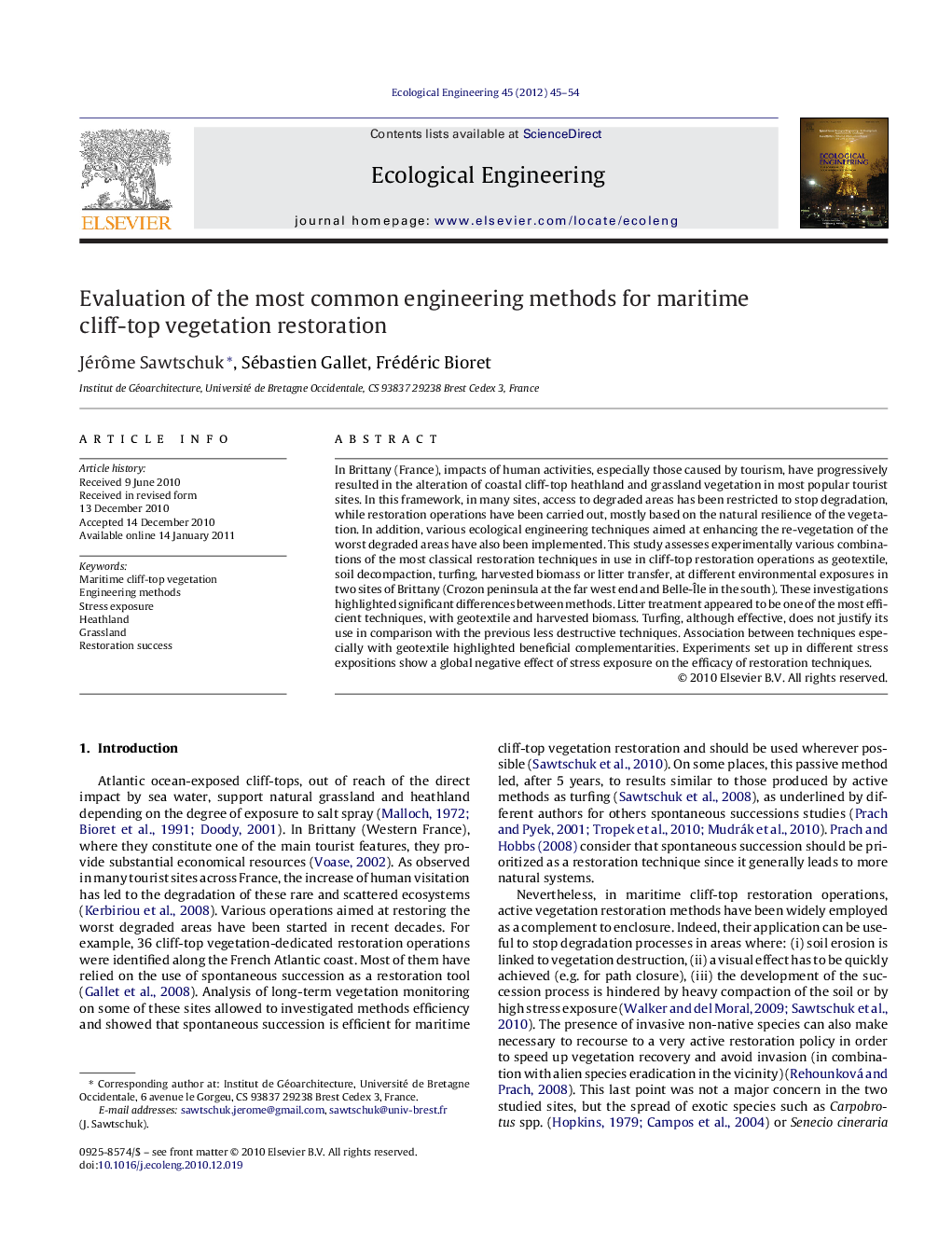| کد مقاله | کد نشریه | سال انتشار | مقاله انگلیسی | نسخه تمام متن |
|---|---|---|---|---|
| 4390047 | 1618053 | 2012 | 10 صفحه PDF | دانلود رایگان |

In Brittany (France), impacts of human activities, especially those caused by tourism, have progressively resulted in the alteration of coastal cliff-top heathland and grassland vegetation in most popular tourist sites. In this framework, in many sites, access to degraded areas has been restricted to stop degradation, while restoration operations have been carried out, mostly based on the natural resilience of the vegetation. In addition, various ecological engineering techniques aimed at enhancing the re-vegetation of the worst degraded areas have also been implemented. This study assesses experimentally various combinations of the most classical restoration techniques in use in cliff-top restoration operations as geotextile, soil decompaction, turfing, harvested biomass or litter transfer, at different environmental exposures in two sites of Brittany (Crozon peninsula at the far west end and Belle-Île in the south). These investigations highlighted significant differences between methods. Litter treatment appeared to be one of the most efficient techniques, with geotextile and harvested biomass. Turfing, although effective, does not justify its use in comparison with the previous less destructive techniques. Association between techniques especially with geotextile highlighted beneficial complementarities. Experiments set up in different stress expositions show a global negative effect of stress exposure on the efficacy of restoration techniques.
Journal: Ecological Engineering - Volume 45, August 2012, Pages 45–54